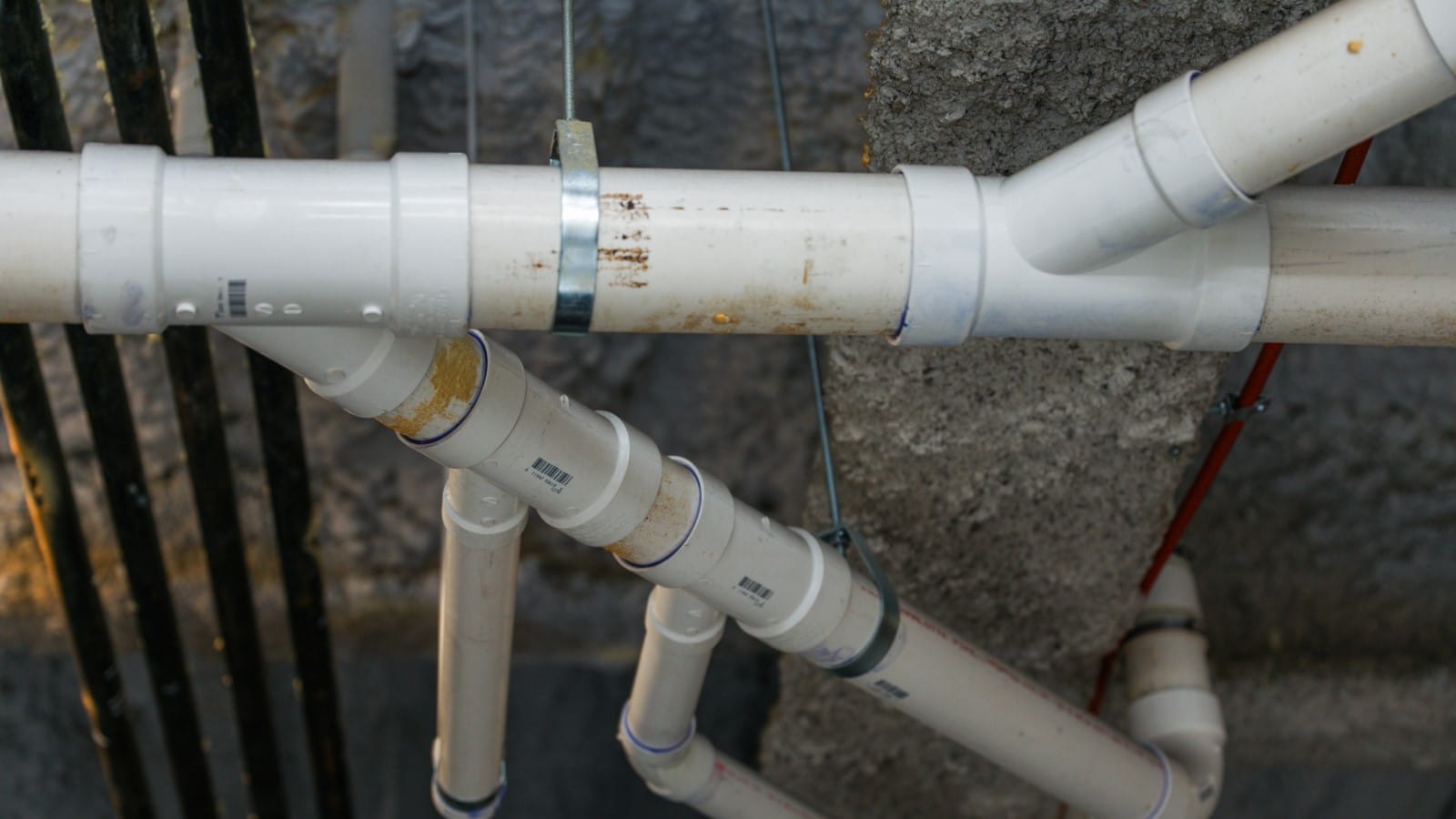Imagine stepping into your home only to find a puddle of water in the kitchen or a bathroom faucet that won’t stop dripping. These scenarios underscore the vital role that a well-maintained plumbing system plays in our daily lives, ensuring both the comfort and functionality of our living spaces. But what exactly goes into a home plumbing system, and how does it work to provide us with such indispensable conveniences?
What You Will Discover:
- The Hidden Complexity of Home Plumbing: Beyond the visible fixtures, a network of pipes and valves works tirelessly to manage your water needs.
- From Fresh Water to Waste Disposal: Learn how your plumbing system balances the supply of potable water while safely removing waste.
- The Significance of the Vent System: Often overlooked, discover how this component is crucial for the seamless flow of water and waste.
By delving into the essentials of water supply, drainage, and venting, as well as the materials and methods used in plumbing, you’ll gain insights into the significance of professional installation and maintenance. Whether you’re a new homeowner or simply curious about how your home’s plumbing functions, this guide offers valuable knowledge and practical tips for ensuring your plumbing system remains efficient, safe, and compliant with local codes.
Let’s embark on this journey to unravel the mysteries of your home’s plumbing system, ensuring you’re well-equipped to appreciate and maintain this crucial aspect of modern living.
Plumbing System: The Lifeline of Your Home
At its core, the plumbing system is designed to perform two primary functions: bring fresh water into your home and remove wastewater. The system is a network of pipes, fixtures, and other components that transport water and sewage. Residential plumbing systems include potable water supply lines, drain-waste-vent (DWV) systems, and various plumbing fixtures that make water use in daily tasks possible.
Key Components:
- Water Supply: This part of your plumbing system brings municipal water into your home, passing through the main water supply line. It’s responsible for supplying all water needs, from drinking to bathing.
- Drainage System: It carries waste and water away from your home to the sewer or septic system. This system includes all the piping within your home that leads to external sewage or septic systems.
- Vent System: An essential yet often overlooked component, the vent system allows sewer gases to escape and lets air into the drainpipes, ensuring water and waste move correctly through the system.
Fixture: More Than Just Taps and Toilets
Plumbing fixtures are the most interactive parts of the plumbing system, including faucets, showers, toilets, and sinks. Each fixture is connected to the plumbing system and plays a role in either the delivery of freshwater or the disposal of waste and wastewater.
Types of Fixtures:
- Faucets and Sinks: Used for washing hands, dishes, and other daily water needs.
- Toilets: Dispose of human waste through the sewage system.
- Bathtubs and Showers: Provide bathing facilities, requiring both hot and cold water supply.
Water Supply: The Source of Life
The water supply system is a critical component, ensuring that potable water is available throughout your home for various uses, including drinking, cooking, and cleaning. This system consists of pipes that distribute water to different parts of the house, controlled by valves to regulate the water flow.
Components:
- Main Water Supply Line: Brings municipal water into your home.
- Pipes and Fixtures: Distribute water to various outlets like sinks, toilets, and washing machines.
- Hot and Cold Water: Ensures that both hot and cold water are available according to need, involving water heaters for the hot water supply.
Drainage: Keeping Your Home Clean and Dry
The drainage system, or the drain-waste-vent (DWV) system, is responsible for removing wastewater from your home. It uses gravity to direct the flow of waste water from fixtures toward the sewer or septic system, preventing any backup or leakage into your home.
Key Aspects:
- Sewer Line: Carries waste away from your home to the municipal sewage system or a private septic system.
- Traps: U-shaped pipes under sinks that hold water, preventing sewer gases from entering the home.
- Vent Pipes: Allow sewer gases to escape and provide air pressure, ensuring wastewater flows correctly.
Types of Plumbing: Materials and Methods
Various types of plumbing systems and materials are used in residential settings, each with its advantages and applications. From copper and PVC pipes for water supply to cast iron and ABS for drainage, the choice of materials can impact the longevity and efficiency of your plumbing system.
Common Pipe Materials:
- PVC: Lightweight and resistant to corrosion, commonly used for drain lines.
- Copper: Durable and reliable for water supply lines, offering longevity and resistance to corrosion.
- PEX: Flexible and easy to install, used for both hot and cold water supply.
The Role of Professional Installation and Maintenance
While understanding the basics of your home plumbing system is crucial, ensuring its proper installation, maintenance, and repair is paramount. Professional plumbers play a vital role in keeping your plumbing system efficient, safe, and up to code. Regular inspections and maintenance can prevent significant issues and extend the lifespan of your plumbing system.
Why Professional Services Matter:
- Expertise: Professional plumbers have the knowledge and tools to diagnose and fix complex plumbing issues.
- Safety: Proper handling of plumbing repairs and installations can prevent potential hazards, such as water damage or sewer gas leaks.
- Compliance: Ensuring that your plumbing system complies with local building codes and regulations is essential for your safety and the integrity of your home.
Plumbing System: The Foundation of a Functional Home
As we conclude our exploration of the vital systems that keep our homes running smoothly, it becomes clear that the plumbing system is not just a convenience but a cornerstone of modern living. Its seamless operation ensures that our daily routines are supported by a reliable flow of clean water and efficient waste removal. This guide has journeyed through the intricate details of home plumbing, shedding light on the unseen network that works tirelessly behind our walls.
Elevating Your Home’s Functionality Through Plumbing
Understanding the nuances of your home’s plumbing system is the first step toward ensuring its longevity and reliability. Here’s a brief recap of the essential insights we’ve shared:
- The Vital Role of the Water Supply System: Ensures the delivery of potable water to your home, crucial for all water-related activities from cooking to cleaning.
- The Critical Function of the Drain-Waste-Vent System: Manages the removal of wastewater and sewage, preventing the backflow of sewer gases into your home.
- The Significance of Choosing the Right Plumbing Pipes: Influences the efficiency, safety, and sustainability of your water and sewage systems.
- The Importance of Professional Installation and Maintenance: Guarantees that your plumbing system adheres to plumbing codes, operates efficiently, and remains safe for all occupants.
Armed with this knowledge, homeowners are better equipped to appreciate the complexity of their plumbing systems, recognize early signs of issues, and make informed decisions about maintenance and upgrades. Remember, while the basics of plumbing may be universally applicable, local regulations, water quality, and climate can all influence the specific needs of your home’s plumbing system.
By prioritizing regular maintenance and seeking professional advice when needed, you can not only prevent inconvenient and potentially costly issues but also contribute to the sustainability and efficiency of your home’s plumbing infrastructure. This proactive approach ensures that your home remains a safe, comfortable, and functional space for you and your loved ones.
In essence, your home’s plumbing system is a testament to the marvels of modern engineering. Its seamless integration into our daily lives often goes unnoticed, yet its impact on our comfort, health, and well-being cannot be overstated. As we continue to rely on these intricate systems, let us not forget the importance of knowledge, care, and professional expertise in maintaining the flow of our lives.





